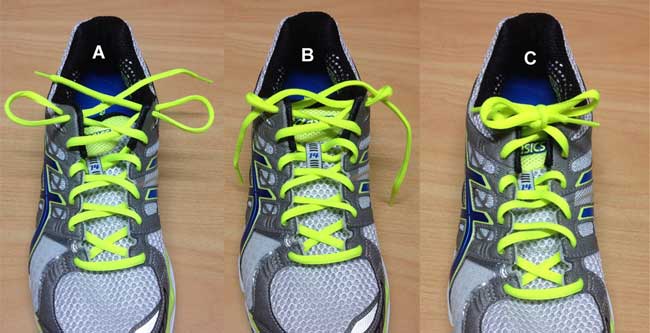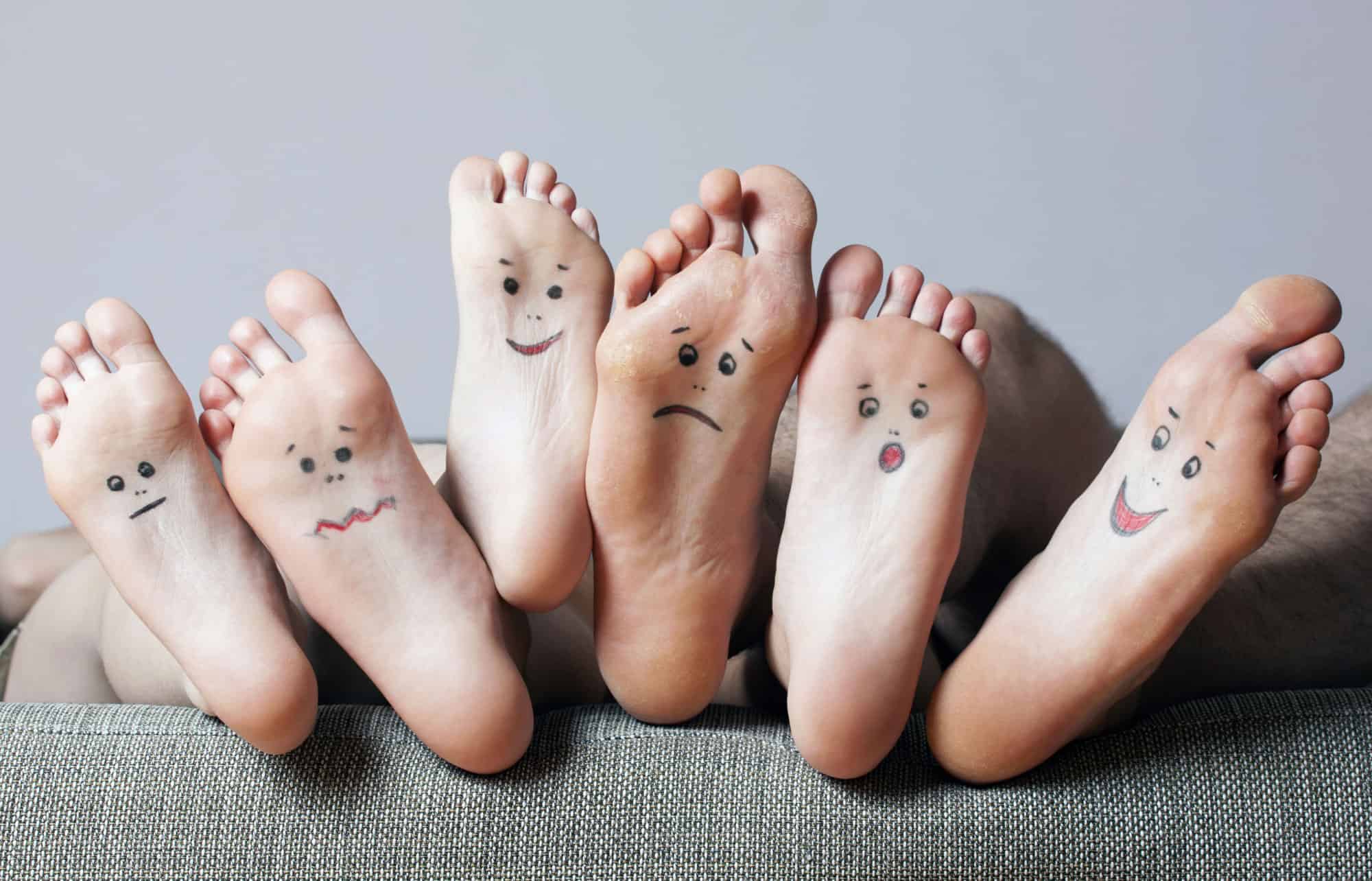Whenever I ask runners to take their shoes and socks off for their first exam, they always jump into the apologies about their “ugly feet.” I usually respond, “Don’t worry, I’m a runner, I’m used to it.” Runners are notorious for having less-than-perfect feet, featuring charming blisters and the all-too-familiar black toenails. We strut around proudly, bearing our battle scars, while our friends can’t help but cringe at the sight of our feet. So, what’s behind these foot fiascos, and what can we do about them? Let’s dig into the world of blisters and black toenails, and uncover the secrets of our less-than-glamorous runner’s feet!
The Blister Chronicles: Why Do We Get Them?
If you haven’t had a painful blister in your running career, you’re both really lucky AND among the few. There are many reasons blisters can show up. Sometimes, we have more control over them, such as with poor-fitting shoes. In other cases, they can be harder to avoid, especially if your shoes get wet. So why do these pesky nuisances show up?
- Poor Shoe Fit: If your shoes are too small or tight, there’s a good chance you’ll experience some blisters. Shoes that are too tight rub against your skin, causing friction and, you guessed it, blisters. The lesson? Make sure you get a proper shoe fit. In some brands, runners are even finding differences in size when they get a new shoe of the same model. Take caution when buying the “same shoe” without first trying them on.
- Traumatic Impact: Each time your foot hits the ground, there’s a series of impacts along the surface area of your foot. Typically, we distribute those forces evenly throughout the foot. In cases of faulty biomechanics, there can be extra stress in some areas of the foot. Below, we’ll discuss what your blister location tells you about your biomechanics.
- Inappropriate Sock Choices: Cotton socks can act like sponges for moisture. Opt for moisture-wicking materials to avoid friction that can cause blisters. Your feet deserve better! If you’re getting blisters between your toes, opt for toe socks.
- Increased Mileage: You might feel unstoppable on your running journey, but increased mileage can lead to more contact and friction, resulting in some unwelcome blisters on your feet.
- Foot Shape and Type: Whether you have high arches or flat feet, your foot’s structure plays a significant role in blister formation. Our feet also have unique shapes, including how our toes are sloped (or not). Shoes will have different last and toe-box shapes that may fit your feet better based on their type and size. Knowing your foot shape and type can help you prevent those painful bubbles.
The Blister Chronicles: What Location Tells Us
Blister locations on the feet can provide valuable insights into an individual’s biomechanics and foot function. Here’s a breakdown of some common blister locations and what they might indicate:
- Heel Blisters: Blisters on the back of the heel often result from friction caused by poorly fitting shoes or improper gait. This may indicate issues like excessive heel striking or overpronation, which would result in blisters on the medial aspect of the heel.
- Ball of the Foot Blisters (Metatarsal Area): These blisters typically arise from excessive pressure from running or walking, suggesting that the individual has a high arch, limited ankle mobility, or improper footwear that lacks cushioning and support.
- Toe Blisters:
- Big Toe: Blisters here can be caused by friction from tight shoes. More often, they are an early sign of biomechanical issues. With optimal mechanics, runners push straight off the big toe. Issues such as limited ankle mobility, overpronation, and limited big toe mobility can cause you to push off more on the medial aspect of the big toe. This blister, therefore, is a sign that there could be future injuries caused by poor biomechanics, including bunions.
- Little Toe: Blisters on the little toe can result from shoe fit issues, particularly in narrower shoes. They reflect how the foot’s shape, toe box, and width affect comfort.
- In-between Toes (Interdigital Blisters): These may signal issues with toe alignment or footwear that causes the toes to rub against each other.
- Arch Blisters: Blisters forming on the arch can indicate that the foot is overusing certain muscles due to lack of support. This can be associated with overpronation or limited ankle mobility.
- Lateral Side: Blisters on the inside (medial) part of the foot could indicate overpronation, while blisters on the outside (lateral) might suggest underpronation or supination.
In summary, analyzing the location of blisters can help determine issues related to foot structure, shoe fit, and movement patterns. If blistering is frequent, assessing and potentially adjusting footwear, gait, and foot mechanics may be beneficial to prevent further problems.
The Black Toenail Saga
Now that we’ve explored the blister phenomenon, let’s talk about black toenails, or as we affectionately call it, “runner’s toe”. If you thought blisters were bad, wait until you witness the horror of a funky-looking toe peeking out from your sandals. What leads to this dark transformation?
- Traumatic Impact: Just like blisters, black toenails often stem from repeated trauma. That beautiful shoe you fell in love with may be the reason for your discolored nail bed.
- Improper Shoe Fit: Call it a theme or just a running curse, but poor shoe fit again makes the list! Shoes that are too tight or short spell trouble for your toenails. Think of your toes as rebellious teenagers; they need their space!
- Nail Length Matters: Let’s face it; long toenails might be chic, but they’re a disaster waiting to happen when you’re hitting the pavement. Keep those nails trimmed, or risk tarnishing your toenail polish aspirations.
- Morton’s Toe: Morton’s toe is when the second toe is longer than the big toe. This can cause more trauma to the toenail on that side. It’s important to make sure your shoes are big enough and that you are not sliding in the shoe or gripping with your toes.
- Sock Choices Gone Wrong: As previously noted, socks are a crucial part of your runner’s ensemble. Bunched-up or non-breathable socks can cause friction, leading to black toenails faster than you can say “Ouch!”
- Increased Mileage: Like blisters, your newfound dedication to marathon training can lead to toe trauma. It can be the price we can pay for extra miles. However, continue reading to see if you can do anything to decrease your risk of blisters and black toenails with additional mileage.
What Can You Do?
Although not all blisters and funky toenails are preventable, there are some things we can do to decrease our risk.
- Proper Shoe Fit
- Shoe Features: Shoes also all have unique shapes and structures. Most of this comes from the last of the shoe. The shoe last is the mechanical form that makes up the main shape of the shoe, made to match the human foot. However, not all feet are shaped the same and not all shoes are made with the same last. There is variety between different brands and models. It can be helpful to recall what has been helpful in the past and try to get shoes with similar structure. There are also differences in the heel cup, toe box, and overall width of shoes that can affect the shoe’s fit. Subtle changes can make a big difference. We recommend talking to a running shoe expert if you continue to have problems with blisters and black toenails.
- Tying/Lacing Your Shoes: If you’re having shoe fit issues, you can also try lacing your shoes differently. A common technique is heel-lock lace (see picture below), which keeps our foot from sliding forward in the shoe. Not only can this reduce friction, but it also reduces the chance that we will grip with our toes.
- Socks Matter: Cotton socks are not your friend. Wear moisture-wicking socks and also consider toe-socks, especially if you’re getting blisters between your toes.
- Fix Your Mechanics: As you read above, the location of blisters can result from faulty mechanics. Blisters can be an early sign of injury risk and tell us much about what’s happening when you run. Consider seeing a biomechanics specialist.
- Take Care of Your Feet: Trimming your toenails can help prevent black toenails. Also, consider using Vaseline or another lubricant on hot or rainy days.

Conclusion
So there you have it! Blisters and black toenails are just part of the struggle of being a runner. While they might not be the most Instagrammable features, they can also be badges of honor that tell the world you’re committed to your craft. However, there are some things we can do to prevent them. It’s essential to listen to what our feet are telling us—whether it’s time for new shoes, better socks, or even a trip to Omega Project for a 3D Gait Analysis. And hey, if you happen to sport some funky toes, just remember that every run is a step closer to becoming the best version of yourself—even if your feet are having a meltdown along the way! So lace up those shoes (correctly) and run on—blisters and black toenails and all!

